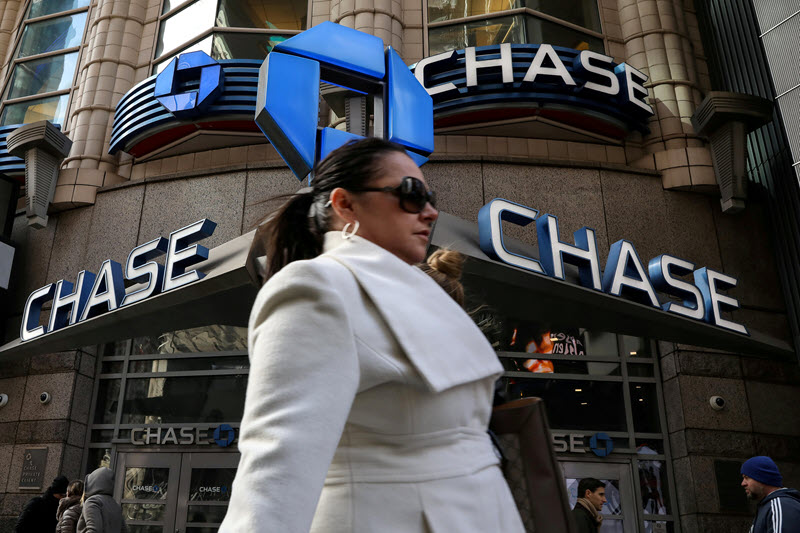By Yoruk Bahceli
(Reuters) - Italian government bonds, usually among the first to be dumped by panicky investors when a global crisis takes hold, have been absent from the maelstrom sparked by the recent banking turmoil -- even outperforming European peers.
Italy's bonds, which carry yields almost double those of top-rated Germany as compensation for lending to one of the world's most-indebted countries, are seen as a proxy for risk in Southern Europe.
Yet, even as two U.S. banks collapsed and Credit Suisse was rescued, Italy's brighter economic and political outlook proved a buffer from the storm. Yields on Italian 10-year bonds are down 60 basis points (bps) so far this year.
Italian bonds have returned 4.1% year-to-date, compared to 2.9% on euro zone government bonds overall.
The closely-watched gap over Germany, at 185 bps, is well below peaks seen during previous episodes of global stress and barely moved from early March levels.
"The spread on Italy over Germany is not really factoring in any risk of something going wrong," said Mike Riddell, senior fixed income portfolio manager at Allianz (ETR:ALVG) Global Investors.
Investors initially worried about Prime Minister Giorgia Meloni's far-right background and fiery rhetoric when her bloc won elections last September.
But those concerns have eased as Meloni's tone has moderated in office. Her budget, boosting spending and tax cuts, has received the green light from the European Union and the economy has fared better than expected, with a 2023 growth target expected to be revised to 1% from 0.6% previously.
However, there are risks on the horizon. For starters, the growth outlook is turning and Italy plans to cut its 2024 growth forecast to 1.4% from a 1.9% November projection.
The estimate is being cut as Rome is weighing the hit from rising interest rates and struggling to spend European Union post-COVID-19 recovery funds, which are key to its debt outlook.
The EU has frozen an overdue 19-billion-euro ($20.50 billion) tranche, seeking clarification on efforts to meet the targets needed to unlock the funds -- a development that could test investor sentiment.
Significant delays in meeting the targets would hurt medium-term growth prospects, negatively impacting Italy's credit rating, Scope Ratings said.
More aggressive European Central Bank rate hikes to curb stubborn inflation could also renew concerns over the sustainability of Italy's debt, which is the highest in the euro zone after Greece.
Union Investment senior portfolio manager Martin Lenz said that if ECB rates rose to 4% from 3% now, above market expectations, and stayed there for a period, then such worries could return.
And the banking turmoil has raised global recession risks.
"With a recession looming, then I would expect spreads to be to be wider rather than tighter from here," said Myles Bradshaw, head of global aggregate strategies at J.P. Morgan Asset Management, who is underweight Italian bonds.
GRAPHIC - Italy's spread holds tight in banking turmoil
https://fingfx.thomsonreuters.com/gfx/mkt/lgvdkxnjnpo/italy%20spread.png
SIT TIGHT?
For now, investors are sitting tight, with juicy yields on Italian bonds helping the market benefit from strong flows into global bonds and a broad rally in riskier assets.
Confidence in the ECB's anti-fragmentation tool, the Transmission Protection Instrument (TPI), is helping. Under the TPI, the ECB pledged to buy bonds from countries seeing spreads widen through no fault of their own. It is yet to be seen what conditions would prompt the ECB to step in.
Italy's bond spread ballooned to over 500 bps during the euro zone debt crisis in 2011 and the current stability of the gap is a welcome sign for policymakers
"It's quite a good sign for Europe generally, because banking stress normally then feeds into sovereign stress," said JPMorgan (NYSE:JPM)'s Bradshaw.
The gap blew out to over 300 bps at the height of the 2020 COVID-19 pandemic, fuelling worries about debt sustainability and the exposure of local banks to sovereign debt.
It also surged ahead of the ECB's first rate hike in a decade last July and again when Meloni's bloc won elections, just as Britain's budget and pension fund turmoil shook markets.
Supporting the optimism around the government, helped by inflation, Italy's public debt fell to around 145% of GDP in 2022, from roughly 155% in 2020, compared to pre-pandemic levels around 134%.
"You don't have the noise from the political side, no country specific reasons for concern at the moment," said Oliver Eichmann, head of rates, fixed income EMEA at DWS, who favours shorter and medium-term Italian bonds. He added that debt sustainability was currently "not a big deal".
With 190 billion euros of funds at stake, Meloni's government, in talks with Brussels, was also unlikely to risk a fallout with the EU, investors said.
"There is...no reason at this stage for Italy to start to push back," said Gareth Hill, fund manager at Royal London Asset Management, who halved his underweight position in Italian bonds in March, betting spreads won't widen as much as last year.

GRAPHIC - Italy's debt-to-GDP ratio
https://fingfx.thomsonreuters.com/gfx/mkt/egpbylajovq/italian%20debt%20to%20gdp.png
